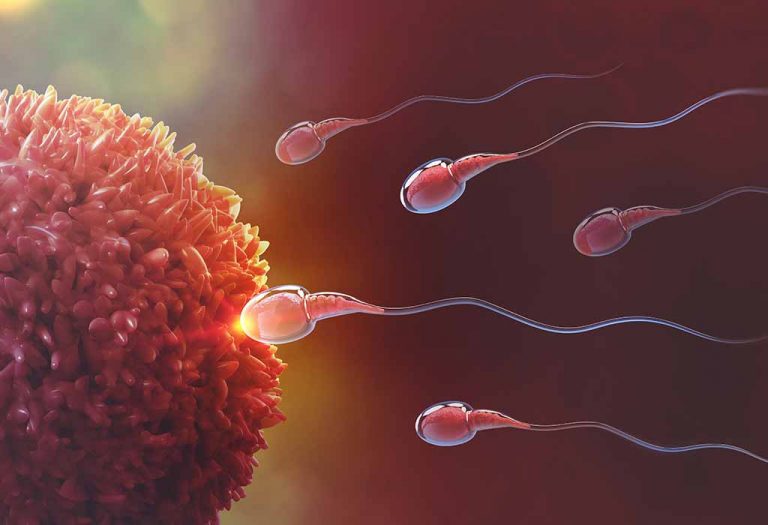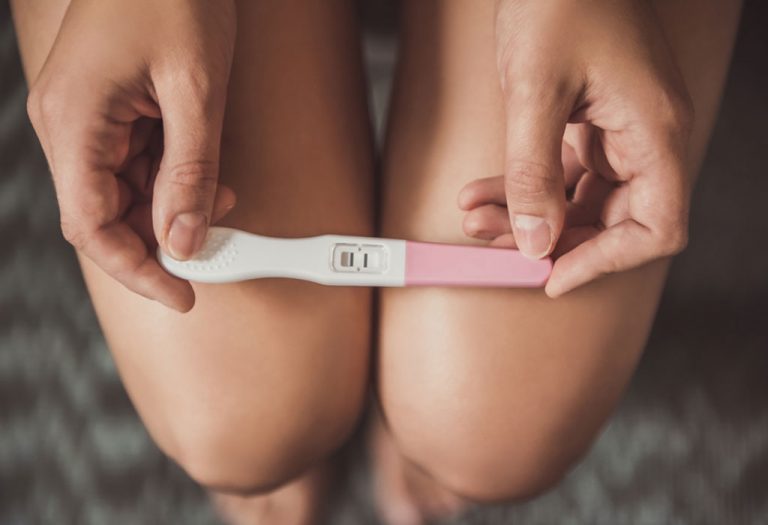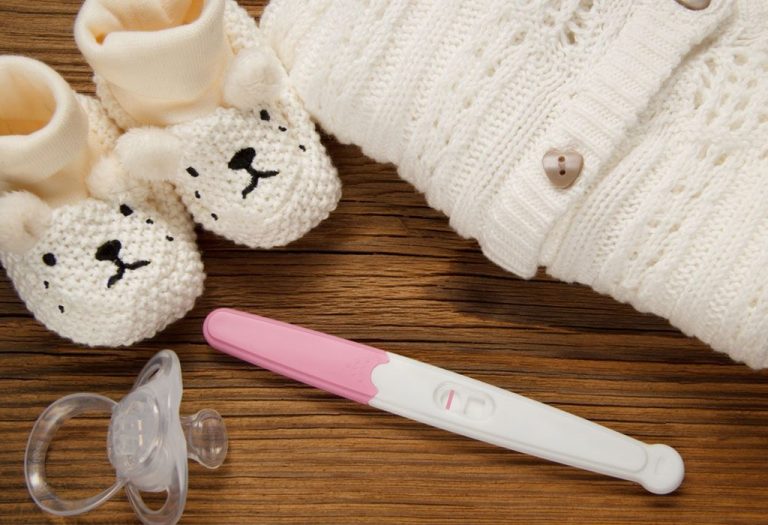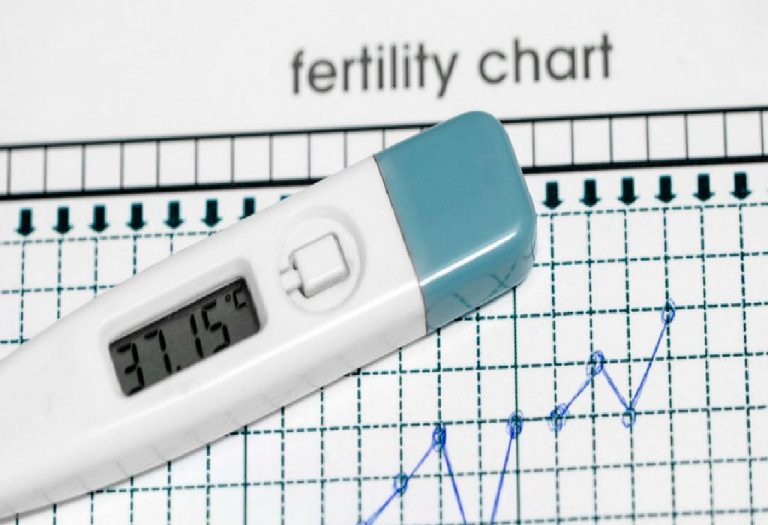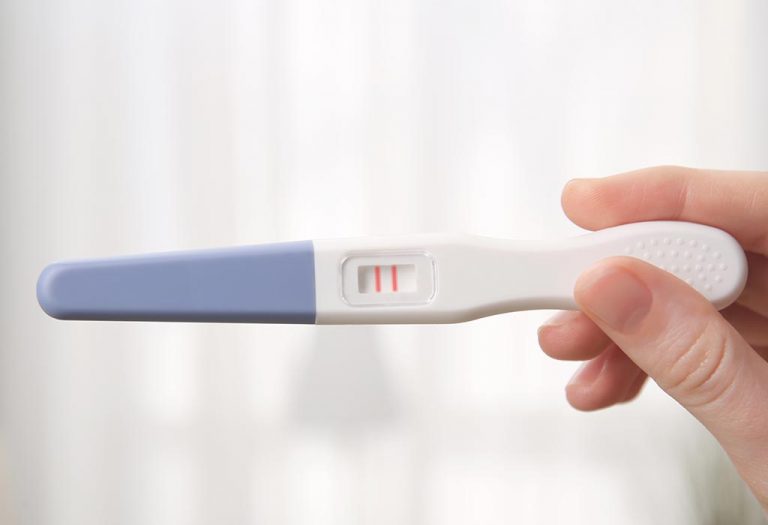Fertilization: Signs, Symptoms & When Does It Occur
- What Is Fertilization?
- Where Does Fertilization Take Place?
- When Does Fertilization Normally Occur?
- How Does Fertilization Happen?
- How Long Does It Take for a Sperm to Fertilize an Egg Cell?
- What Are the Symptoms of Fertilization?
- How Long Will Sperm Live Inside the Body to Get Pregnant?
- FAQs
Fertilization happens when a man’s sperm comes together with a woman’s eggs released during ovulation. Fertilization occurs in the fallopian tube, and then the matured egg gets down to the uterus. Though the process of fertilization is complicated, having a thorough knowledge of it keeps you aware of your reproductive system. Rumours and misconceptions about fertilization are plenty, and people are unaware of basic knowledge of fertilization. The females produce only a single egg every month, but the males produce millions of sperm. The best sperm combines with an egg to result in fertilization.
There is a lot in the process of fertilization, and we will discuss the same in detail in this article.
What Is Fertilization?
Fertilization is the inception of the pregnancy. When the female egg combines with the male sperm to turn into a single cell, fertilization is completed. Ovulation happens when the female’s ovary releases a mature egg. Fertilization happens when this egg comes in contact with a healthy sperm and merges with it in the fallopian tube (1).
The zygote, or the recently fertilized egg, moves down the fallopian tube and becomes a morula. It then enters the uterus and becomes a blastocyst. Then, the implantation process takes place where the blastocyst burrows into the uterus lining (2). The uterus lining feeds the blastocyst, and it grows to become a fetus. However, an unfertilised egg moves down from the fallopian tube to the uterus and through the vagina. The uterus lining then sheds itself, and you get your periods.
Where Does Fertilization Take Place?
There is a common misconception that fertilization happens in the uterus. However, the fact is that fertilization occurs in the fallopian tube, and then the fertilised egg moves to the uterus. The sperm has to travel from the vagina to the cervix and then through the uterus to the fallopian tube to meet the egg.
The implantation process normally takes place in the uterus. However, if it happens outside the uterus, such as in the fallopian tube, abdomen, cervix, or ovary, it is termed ectopic pregnancy. Such a type of pregnancy has to be terminated as these areas are not equipped with the right tissue and appropriate place for the pregnancy (3).
When Does Fertilization Normally Occur?
It is normally believed that the best chances of fertilization are before the two weeks of your next period. As this is the time ovulation happens in the female body. But it is essential that the sperm also reaches the place of the egg at the same time. There is a very small window of time after ovulation for the sperm to fertilize the egg, usually within 24 hours. Fertilization occurs in this time frame, otherwise, the unfertilized ovum ends in menses (4).
Therefore the conditions and the timing have to be correct and exact for fertilization. The sperm may enter the fallopian tube, but it may or may not fertilise the egg. The timing is the most crucial factor in the fertilization process. The sperm may arrive too early or late in the tube to meet the egg. Also, only one fallopian tube has the egg. So the sperm need to enter the correct fallopian tube with the egg.
How Does Fertilization Happen?
Fertilization can happen only when the female egg cell meets the male sperm cell in the fallopian tube. After the process of fertilization, the newly fertilized cell, called a zygote, moves down to the uterus and burrows itself in the uterus lining. This process is called implantation. When the zygote gets implanted, it is called a blastocyst. The blastocyst feeds on the lining of the uterus (5).
However, under the in vitro fertilization (IVF) process, fertilization does not occur in the uterus but outside your body. Under this process, the eggs are fertilized outside the body and placed in the uterus for nurturing. The IVF process is beneficial for people whose fallopian tubes are either missing or blocked (6).
How Long Does It Take for a Sperm to Fertilize an Egg Cell?
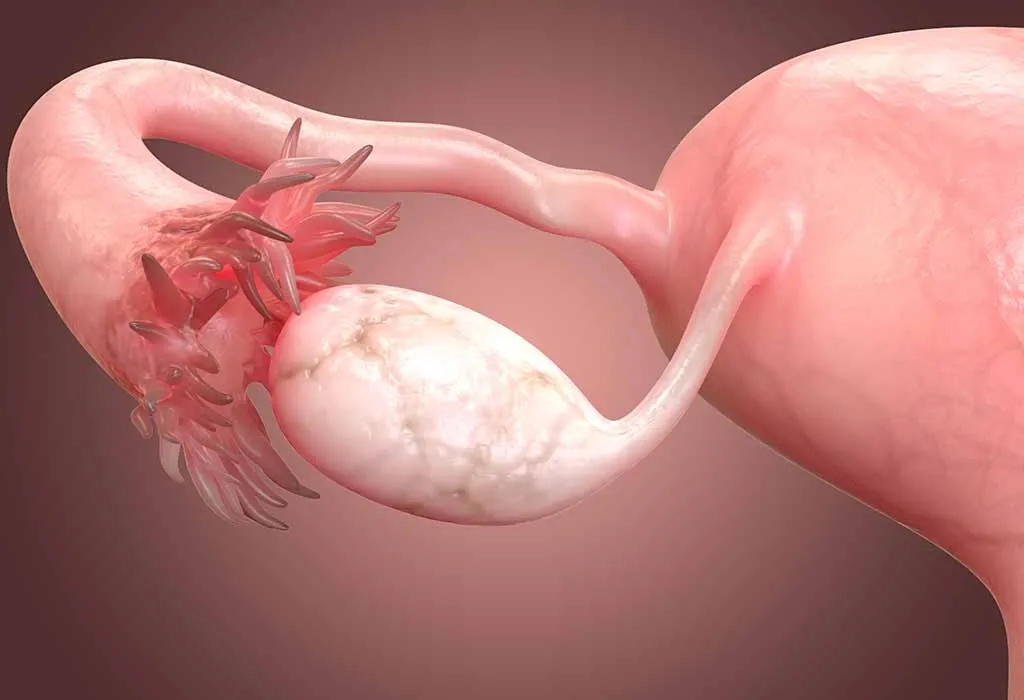
The common belief that fertilization takes place immediately after sex is a myth. Even the fastest sperm requires around an hour to reach the egg. The entire process of fertilization may take a few hours after that. The sperm gears up for the race or, to be precise, for the journey to the egg after ejaculation. The semen coagulates in the vagina of a woman after at least half an hour after the sex, and this creates a physical barrier for the sperm to not wander in the wrong direction. The semen reliquefies within half an hour, and the barrier disappears.
Within this time, the sperm that does not make it through the cervix gets kicked out of the race. Any errant cells or sperm gets destroyed due to the acidic nature of the vagina.
The next step is the cervical canal, where the sperm undergoes biochemical changes. It gets a tail that provides a thrashing speed so that the sperm swims through the uterus and reaches its target within time. The cervical canal has all the ingredients to make the sperm journey easier through its mucus. The mucus is thinner, clearer, and more stretched during ovulation. The strings of molecule lines behave as the train tracks for speeding up the sperm journey. The sperm digs through the egg’s outer layer and penetrates the egg membrane. It finally reaches the cytoplasm and releases the genetic contribution.
Once any sperm succeeds in the penetration, all the other sperms surrounding the egg undergo a chemical reaction and prevent further penetration. The chromosomes of sperm and egg come together, and the egg is now fertilised.
What Are the Symptoms of Fertilization?
Normally, people who are planning to conceive are more observant about any changes in the body, and any slight change will not go unnoticed and may be attached to pregnancy. However, getting symptoms immediately after fertilization is a myth, and it may take a few days to get the symptoms of the fertilization of the egg. So, what are the commonly observed signs & symptoms of fertilization?
Some women do not show any signs of pregnancy or fertilization until a month or so. The most common pregnancy symptom is the missed period of the menstrual cycle. But that will happen at least after two weeks of fertilization. Some women show early signs such as fatigue and breast tenderness, which can be attached to hormonal changes due to ovulation and fertilization.
Some of the major symptoms of fertilization, basically successful implantation, can be listed below (7):
- Implantation bleeding and cramping
- Increase in the basal temperature of the body
- Breast tenderness
- Pinkish discharge
- Fatigue
- Headaches
- Food cravings
- Food aversion
- More frequent urination
- Mood swings
- Morning sickness
- Feeling dizzy
- Feeling wobbly
However, not all women need to show every sign of fertilization as every pregnancy is different. Some may even not show any sign but understand that they are pregnant going by their intuition.
It is also quite easy to mistake premenstrual symptoms for those of fertilization. However, a lot of women suffering from PCOS or PCOD experience difficulty in conceiving naturally. In turn, it can especially be tough for them to identify signs of fertilization correctly. The good news is that PCOD or PCOS can be managed by leading a healthy lifestyle and getting your hormones checked and corrected routinely. andMe PCOS PCOD Tea for Hormonal Balance Tea Bags is one such helping hand that you can use to curb your PCOD or PCOS. It is packed with vegan and organic ingredients, like Shavatri, Lodhra, and Ashwagandha, which optimise hormonal balance in women.
How Long Will Sperm Live Inside the Body to Get Pregnant?
Sperm can survive the female reproductive system for around 72 hours after ejaculation. According to the Mayo Clinic, in some rare cases, it also lives hail and is healthy for up to five days (8). The egg has a very short period of about 12 to 24 hours only after the evaluation.
So if the sperm does not reach the fallopian tube within or near the time when the egg is released, then the body absorbs the egg back after the specified time. Then, the conception time of this cycle is lost, and you will have to try it next month. The reason is simple: though the sperm gets produced daily, the female egg is produced only once every month.
FAQs
1. Can you get any feeling when an egg gets fertilized?
No, you won’t feel anything when an egg gets fertilized. However, some women feel the implantation—the process in which the fertilized egg travels to the fallopian tube and attaches deeply to the uterus wall—eight to night days after fertilization. Implantation may cause light spotting and abdominal cramps.
2. Do twins occur from fertilization of two eggs or one egg?
Twins can occur from the fertilization of two eggs at once as well as a single egg. When two eggs are fertilized by two different sperm cells, they make fraternal twins (nonidentical). When one egg splits into two after fertilization, it makes identical twins (9).
So, there’s your answer to, “How does fertilization happen in the human body?” There are several twists and turns in this road of fertilization and many ifs and buts. Fulfilling the perfect timing and the right conditions is essential for the egg and the sperm to meet and give the boon of the baby. With the perfect harmony of the female egg and the male sperm, the journey of fertilization of the egg turns into the sweetest journey of life called parenthood.
References/Resources:
1. How Your Fetus Grows During Pregnancy; ACOG; https://www.acog.org/womens-health/faqs/how-your-fetus-grows-during-pregnancy?utm_source=redirect&utm_medium=web&utm_campaign=otn
2. Fertilization and implantation; Mayo Clinic; https://www.mayoclinic.org/healthy-lifestyle/pregnancy-week-by-week/multimedia/fertilization-and-implantation/img-20008656
3. Ectopic Pregnancy; ACOG; https://www.acog.org/womens-health/faqs/ectopic-pregnancy?utm_source=redirect&utm_medium=web&utm_campaign=otn
4. Oliver. R, Basit. H; Embryology, Fertilization; StatPearls Publishing; https://www.ncbi.nlm.nih.gov/books/NBK542186/
5. Conception: How It Works; UCSF Health; https://www.ucsfhealth.org/education/conception-how-it-works
6. IVF Procedures; Cleveland Clinic; https://my.clevelandclinic.org/departments/fertility/lab/ivf-procedures
7. Implantation Bleeding; Cleveland Clinic; https://my.clevelandclinic.org/health/symptoms/24536-implantation-bleeding
8. How long do sperm live after ejaculation?; Mayo Clinic; https://www.mayoclinic.org/healthy-lifestyle/getting-pregnant/expert-answers/pregnancy/faq-20058504
9. Expecting Twins or Triplets; Cleveland Clinic; https://my.clevelandclinic.org/health/articles/9710-expecting-twins-or-triplets
Also Read:
A Guide to Fertility
How Are Infant’s Made
Follicular Study and Monitoring
Fertile Window and How to Calculate it
Was This Article Helpful?
Parenting is a huge responsibility, for you as a caregiver, but also for us as a parenting content platform. We understand that and take our responsibility of creating credible content seriously. FirstCry Parenting articles are written and published only after extensive research using factually sound references to deliver quality content that is accurate, validated by experts, and completely reliable. To understand how we go about creating content that is credible, read our editorial policy here.






